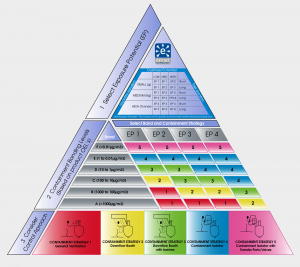Cytostatic and cytotoxic agents prevent cell replication or growth, which makes them both useful anti-cancer drugs and extremely toxic. To determine which collective and personal protective measures should be taken in handling these substances, CENEXI-Laboratoires Thissen uses a validated classification strategy: the Control Strategy Selection Guide.
Setting and problem
Cytostatic and cytotoxic agents are often used as anti-cancer drugs, because they prevent cell replication or growth. This also makes them extremely toxic for healthy people. Information about employee protection, which can normally be found on the safety data information sheet, is often locking for these substances. Therefore, it is unclear (how to determine) which measures should be taken to protect employees against exposure when working with these substances.
Solution
CENEXI-Laboratoires Thissen now uses the Control Strategy Selection Guide. This is a validated classification system that determines for each agent which collective and individual protective measures should be taken. This classification system is based on the exposure level, which is determined by the length of exposure, the dustiness of the substance and its quantity, and on the occupation exposure limits (OELs). With this system, the company systematically determines which protective measures should be taken for which substances and, thus, limits the exposure as much as possible. Interested? Have a look at the presentation on the prevention cytostatic and cytotoxics.
Lessons learned
The Control Strategy Selection Guide is a good system to translate exposure levels and OELs to using the right collective and personal protective equipment for substances for which employee safety information is lacking.
